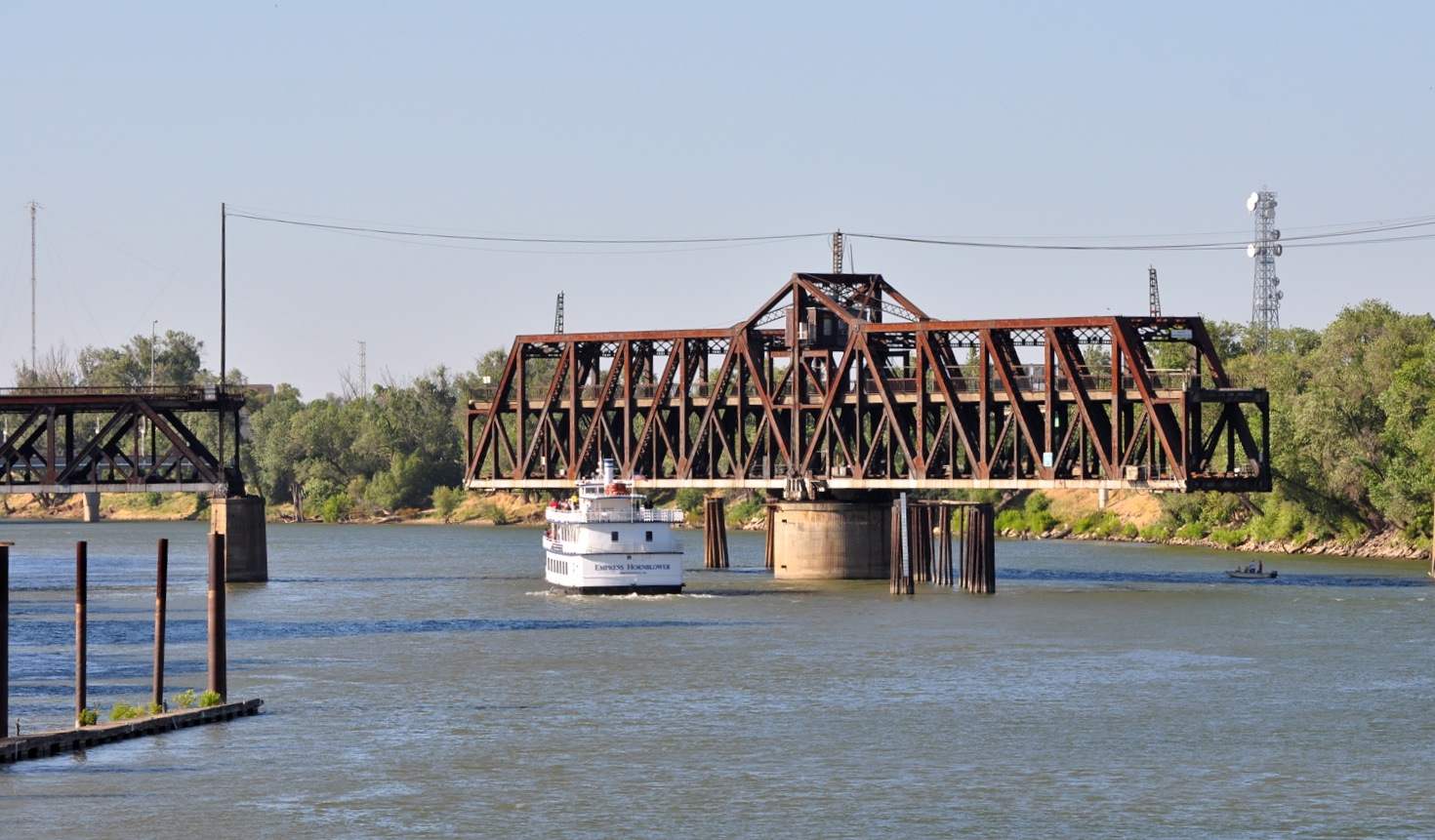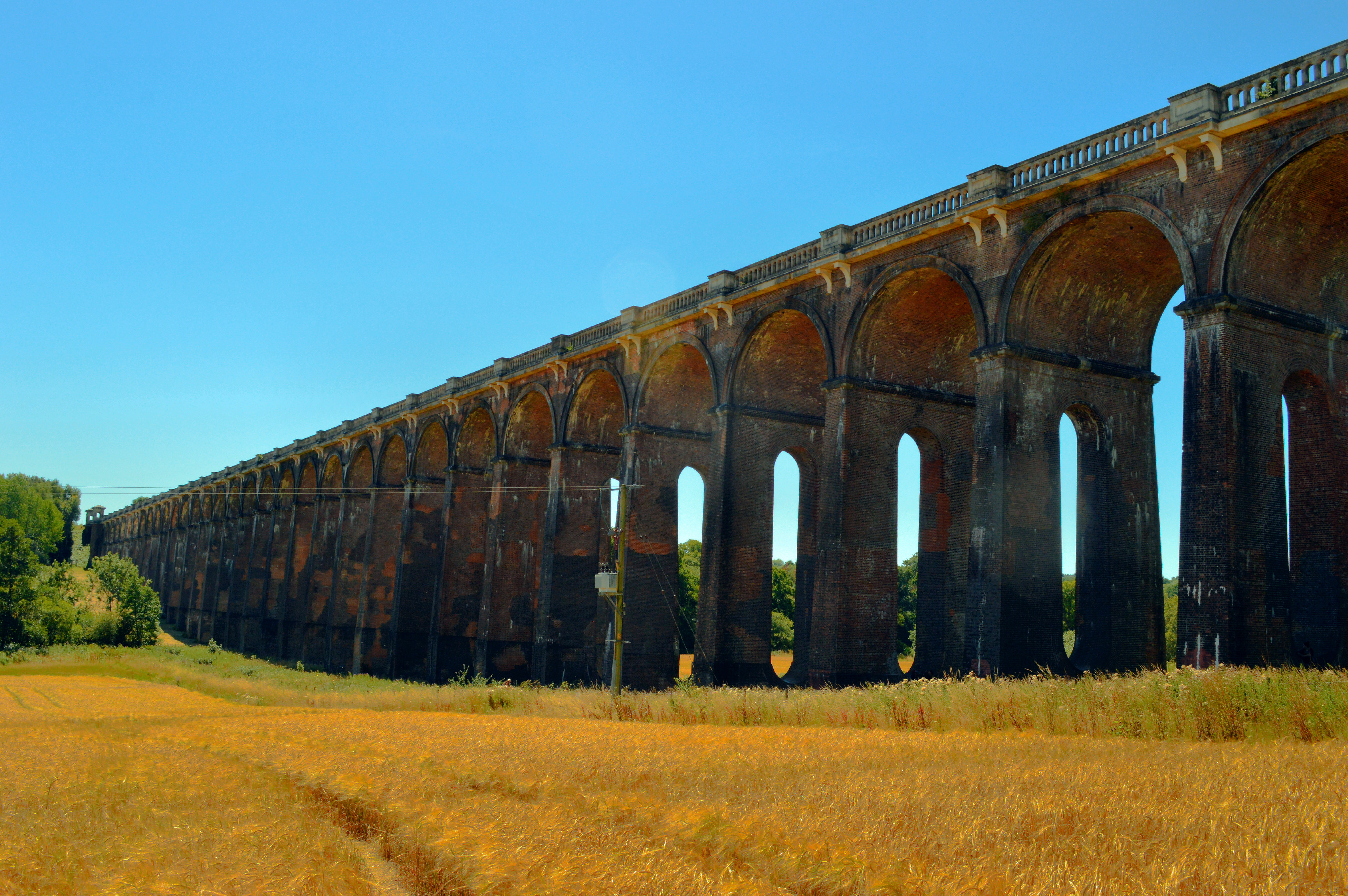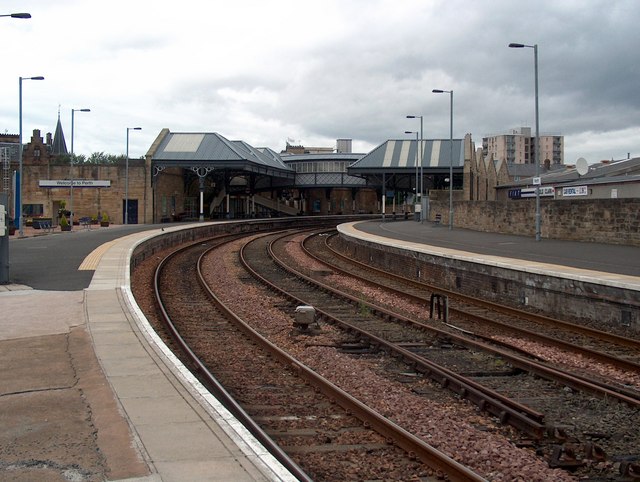|
Tay Viaduct
The Tay Viaduct, also known as the West Railway Bridge, is a single-track railway viaduct in Perth, Perth and Kinross, Scotland. It is around long. It carries the Scottish Central Railway, via a pronounced curve, across the River Tay to and from Perth railway station, to the west. Built in 1864, the work of London's Francis Freeman & Lee,''The Artizan'', Volume 5 (1847), p. 183 it replaced an earlier double-track timber viaduct dating from 1849.David Ross, ''The Caledonian: Scotland's Imperial Railway: A History'', Stenlake Publishing Limited, Catrine, 2014, The first pier of today's structure is for a double track, but the line is now single. The viaduct has seven iron girder spans on the city side of the river, ten stone arches on Moncreiffe Island, and six iron girder spans to the east of Moncreiffe Island. The earlier bridge had 25 arches and an iron swing bridge. The bridge has two spans across the Tay from Perth: the first is to Moncreiffe Island; the second is fr ... [...More Info...] [...Related Items...] OR: [Wikipedia] [Google] [Baidu] |
Scottish Central Railway
The Scottish Central Railway was formed in 1845 to link Perth and Stirling to Central Scotland, by building a railway line to join the Edinburgh and Glasgow Railway near Castlecary. The line opened in 1848 including a branch to South Alloa. The line immediately became part of the forming trunk railway network in Scotland, and amalgamation with other railways was considered, and in 1865 the Scottish Central Railway amalgamated with the Caledonian Railway. The main line continues in use today as a major part of the Scottish Railway network carrying frequent passenger services and a significant freight traffic. History Conception In earlier years Perth had been an important trading town, but in the 1830s its significance was being overshadowed by the cities of central Scotland. There were short local railways in the area around Dundee, but connection to the emerging network further south, and potentially in England, seemed to be essential, and proposals were put forward from 1841 ... [...More Info...] [...Related Items...] OR: [Wikipedia] [Google] [Baidu] |
Swing Bridge
A swing bridge (or swing span bridge) is a movable bridge that has as its primary structural support a vertical locating pin and support ring, usually at or near to its center of gravity, about which the swing span (turning span) can then pivot horizontally as shown in the animated illustration to the right. Small swing bridges as found over canals may be pivoted only at one end, opening as would a gate, but require substantial underground structure to support the pivot. In its closed position, a swing bridge carrying a road or railway over a river or canal, for example, allows traffic to cross. When a water vessel needs to pass the bridge, road traffic is stopped (usually by traffic signals and barriers), and then motors rotate the bridge horizontally about its pivot point. The typical swing bridge will rotate approximately 90 degrees, or one-quarter turn; however, a bridge which intersects the navigation channel at an oblique angle may be built to rotate only 45 degrees, o ... [...More Info...] [...Related Items...] OR: [Wikipedia] [Google] [Baidu] |
Viaducts In Scotland
A viaduct is a specific type of bridge that consists of a series of arches, pier (architecture), piers or columns supporting a long elevated railway or road. Typically a viaduct connects two points of roughly equal elevation, allowing direct overpass across a wide valley, road, river, or other low-lying terrain features and obstacles. The term ''viaduct'' is derived from the Latin ''via'' meaning "road", and ''ducere'' meaning "to lead". It is a 19th-century derivation from an analogy with Ancient Rome, ancient Roman aqueduct (bridge), aqueducts. Like the Roman aqueducts, many early viaducts comprised a series of arches of roughly equal length. Over land The longest in ancient history, antiquity may have been the Pont Serme which crossed wide marshes in southern France. At its longest point, it measured 2,679 meters with a width of 22 meters. Viaducts are commonly used in many cities that are railroad transport hub, hubs, such as Chicago, Birmingham, London and Manchester. These ... [...More Info...] [...Related Items...] OR: [Wikipedia] [Google] [Baidu] |
Bridges Completed In 1864
A bridge is a structure built to span a physical obstacle (such as a body of water, valley, road, or rail) without blocking the way underneath. It is constructed for the purpose of providing passage over the obstacle, which is usually something that is otherwise difficult or impossible to cross. There are many different designs of bridges, each serving a particular purpose and applicable to different situations. Designs of bridges vary depending on factors such as the function of the bridge, the nature of the terrain where the bridge is constructed and anchored, and the material used to make it, and the funds available to build it. The earliest bridges were likely made with fallen trees and stepping stones. The Neolithic people built boardwalk bridges across marshland. The Arkadiko Bridge (dating from the 13th century BC, in the Peloponnese) is one of the oldest arch bridges still in existence and use. Etymology The ''Oxford English Dictionary'' traces the origin of the wo ... [...More Info...] [...Related Items...] OR: [Wikipedia] [Google] [Baidu] |
The Royal Scotsman
The ''Belmond Royal Scotsman'' is a Scottish overnight luxury train, started in 1985 by GS&WR (Great Scottish and Western Railway Co.), and run since 2005 by Belmond Ltd. Its itineraries include 2, 3, 4, 5 or 7-night journeys around the Scottish Highlands, visiting castles, distilleries and historic sites. Once each year, it also makes a 7-night journey around the whole of Great Britain. Train's history The first train was composed of Mark 1 sleeping cars and three vintage dining and lounge carriages. After the inauguration of the current train set in 1989, the vintage coaches have kept on running as the '' Queen of Scots'' charter train. For the second train batch the train's former owner acquired Pullman cars, which were built in 1960 by Metropolitan Cammell for the East Coast Main Line. This train consisted of four sleeping cars, two dining cars, and one observation car An observation car/carriage/coach (in US English, often abbreviated to simply observation or o ... [...More Info...] [...Related Items...] OR: [Wikipedia] [Google] [Baidu] |
Perth Water Works
Perth Water Works (also known as Corporation Water Works)''Official Guide to Perth and Its Neighbourhood by the Tramway Car Routes'' – Perth Town Council (1907), p. 19 is an historic building in Perth, Scotland, dating to 1832. Standing at the corner of Tay Street and Marshall Place (both part of the A989), the building, a former engine house and water tank, has been the home of The Fergusson Gallery, displaying the work of John Duncan Fergusson, since 1992. The building is Category A listed. Historic Environment Scotland states that it is one of Scotland's most significant industrial buildings, and that its large-scale cast-iron construction may be the first very first in the world. Clean water was drawn from filter beds on Moncreiffe Island, in the adjacent River Tay, and pumped beneath the river, by a steam engine, into a holding tank in the building's rotunda. The building's architect was Adam Anderson, the rector of Perth Academy. An inscription over the door in the r ... [...More Info...] [...Related Items...] OR: [Wikipedia] [Google] [Baidu] |
Kinnoull
Kinnoull is a parish in Perth, Perth and Kinross, Scotland, approximately half a mile northeast of Perth city centre. Beginning at the level of the River Tay, Kinnoull's terrain continues to rise as it continues southeast, culminating in Kinnoull Hill, the summit of which is at . The main access roads to Kinnoull from the centre of Perth are Strathmore Street (the A94) and Muirhall Road, both in Bridgend. Architecture Although the area is largely residential, Kinnoull is also the home of St Mary's Monastery, which was established in 1869 as the first Roman Catholic monastery to be built in Scotland since the Reformation. Gannochy The Robert Matthew Mitchell-designed Gannochy Housing Estate part of Kinnoull was founded by Arthur Kinmond Bell in 1922, when he purchased a large plot of land. At its lower western end, a portion of ground was left for recreational purposes. A duck pond, tennis court and curling pond were constructed adjacent to the Kinnoull Recreation Grounds ... [...More Info...] [...Related Items...] OR: [Wikipedia] [Google] [Baidu] |
Moncreiffe Island
Moncreiffe Island, also known as Friarton Island, is an island in Perth, Scotland. It divides the River Tay into two channels as it flows through Perth, and is crossed by the single-track Tay Viaduct, carrying the Scottish Central Railway. Land use The King James VI Golf Course is situated on and covers much of the island with the remaining land used for allotments. At the 2011 census, it is the only permanently inhabited freshwater island in Scotland which is not on Loch Lomond. Wildlife There are wild garlic, common bluebells, sweet cicely, broom A broom (also known in some forms as a broomstick) is a cleaning tool consisting of usually stiff fibers (often made of materials such as plastic, hair, or corn husks) attached to, and roughly parallel to, a cylindrical handle, the broomstick. ... and dog violets. The island is also frequently used by beavers. References External links Panorama [...More Info...] [...Related Items...] OR: [Wikipedia] [Google] [Baidu] |
River Tay
The River Tay ( gd, Tatha, ; probably from the conjectured Brythonic ''Tausa'', possibly meaning 'silent one' or 'strong one' or, simply, 'flowing') is the longest river in Scotland and the seventh-longest in Great Britain. The Tay originates in western Scotland on the slopes of Ben Lui ( gd, Beinn Laoigh), then flows easterly across the Highlands, through Loch Dochart, Loch Iubhair and Loch Tay, then continues east through Strathtay (see Strath), in the centre of Scotland, then southeasterly through Perth, where it becomes tidal, to its mouth at the Firth of Tay, south of Dundee. It is the largest river in the British Isles by measured discharge. Its catchment is approximately , the Tweed's is and the Spey's is . The river has given its name to Perth's Tay Street, which runs along its western banks for . Course The Tay drains much of the lower region of the Highlands. It originates on the slopes of Ben Lui (''Beinn Laoigh''), around from the west coast town of Ob ... [...More Info...] [...Related Items...] OR: [Wikipedia] [Google] [Baidu] |
Perth Railway Station (Scotland)
, symbol_location = gb , symbol = rail , image = File:Perth Railway Station JThomas.jpg , caption = The station's entrance in 2021 , map_type = Scotland Perth , borough = Perth, Perth and Kinross , country = Scotland , coordinates = , grid_name = Grid reference , grid_position = , manager = ScotRail , platforms = 7 , code = PTH , original = Scottish Central Railway andScottish Midland Junction Railway , pregroup = Caledonian Railway , postgroup = LMS , years = 22 May 1848 , events = Opened as Perth GeneralButt (1995), page 184 , years1 = 1952 , events1 = Renamed as Perth , mpassengers = , footnotes = Passenger statistics from the Office of Rail and Road , embedded = Perth railway station is a railway station located in t ... [...More Info...] [...Related Items...] OR: [Wikipedia] [Google] [Baidu] |



.jpg)


